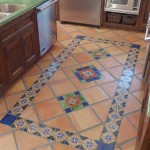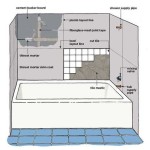How to Repair Tile Grout in Your Shower
Tile grout, the material that fills the spaces between tiles, plays a crucial role in the integrity and aesthetics of a tiled surface, especially in a shower environment. Grout prevents water from seeping behind tiles, which can lead to significant structural damage and mold growth. Over time, shower grout is susceptible to wear and tear due to constant exposure to moisture, temperature fluctuations, and cleaning chemicals. This degradation can manifest as cracks, crumbling, discoloration, or even complete loss of grout. Repairing damaged shower grout is essential for maintaining a healthy and visually appealing bathroom. This article provides a comprehensive guide on how to effectively repair tile grout in a shower.
Before embarking on a grout repair project, it is imperative to assess the extent of the damage. Minor cracks or discoloration may be easily addressed with simple techniques. However, widespread crumbling or missing grout indicates a more significant problem that requires more extensive intervention. A thorough inspection will help determine the appropriate repair method and the materials needed. This assessment should include identifying any underlying issues, such as leaks or water damage, that may have contributed to the grout deterioration. Addressing these underlying problems is crucial to preventing future grout damage.
Identifying the Type of Grout
Grout comes in various forms, each with different properties and application techniques. The two primary types of grout used in showers are sanded grout and unsanded grout. Sanded grout, as the name suggests, contains fine sand particles. This type is typically used for wider grout lines, generally those exceeding 1/8 inch, because the sand adds strength and reduces shrinkage during the curing process. Unsanded grout, on the other hand, is a smoother mixture and is suitable for narrower grout lines, typically those less than 1/8 inch. Using sanded grout in narrow grout lines can result in scratching the tile surface, while using unsanded grout in wider lines can lead to cracking and crumbling due to excessive shrinkage.
Epoxy grout is another type of grout, known for its superior durability and resistance to stains and chemicals. It is a two-part mixture that, when combined, creates a hard, waterproof seal. Epoxy grout is particularly well-suited for high-moisture areas like showers, but it can be more challenging to work with due to its faster setting time and require specific tools.
Determining the type of grout currently installed in the shower is essential for selecting the appropriate repair material. If unsure, a small sample of the existing grout can be taken to a hardware store for identification. Observing the width of the grout lines can also provide clues: wider lines typically indicate sanded grout, while narrower lines suggest unsanded grout.
Preparing the Work Area
Proper preparation is key to a successful grout repair. The first step is to thoroughly clean the shower area to remove any dirt, soap scum, mildew, or loose grout. A stiff-bristled brush and a grout cleaner can be used to scrub the grout lines. For stubborn stains or mildew, a solution of bleach and water (in a well-ventilated area) can be applied, but it is crucial to rinse the area thoroughly afterwards to prevent any adverse reactions with the new grout. Always wear appropriate protective gear, such as gloves and eye protection, when working with cleaning chemicals.
After cleaning, allow the shower area to dry completely. This is essential for ensuring proper adhesion of the new grout. Using a fan or opening a window can accelerate the drying process. Once the area is dry, protect surrounding surfaces, such as the shower walls, tub, or shower door, with painter's tape or plastic sheeting. This will prevent accidental smearing of grout on these surfaces and simplify the cleanup process.
Gather all necessary tools and materials before starting the repair. These typically include a grout removal tool (grout saw, oscillating tool with grout removal blade, or utility knife), a mixing bowl, a grout float, a sponge, a bucket of clean water, the appropriate type of grout, and safety glasses and gloves. Having everything readily available will streamline the repair process and minimize interruptions.
Removing Damaged Grout
The removal of damaged grout is a critical step in the repair process. The objective is to remove all loose, cracked, or crumbling grout without damaging the surrounding tiles. Several tools can be used for this purpose, depending on the type and extent of the damage.
A manual grout saw is a handheld tool with a triangular blade designed specifically for removing grout. It is relatively inexpensive and effective for removing small sections of damaged grout. However, it can be time-consuming and requires some physical effort. When using a grout saw, hold it at a slight angle and use short, even strokes to carefully scrape away the grout. Avoid applying excessive pressure, which could chip or scratch the tiles.
An oscillating tool with a grout removal blade is a more efficient option for removing larger areas of damaged grout. This power tool vibrates the blade at high speeds, allowing it to quickly and easily cut through the grout. However, it requires more caution to avoid damaging the surrounding tiles. Always use a light touch and keep the blade parallel to the grout lines. Start at a low speed and gradually increase it as needed. Wear safety glasses to protect your eyes from flying debris.
A utility knife can be used for removing very small sections of loose or cracked grout. Use a sharp blade and carefully score along the edges of the grout lines before prying out the damaged grout. Be extremely cautious to avoid cutting yourself or scratching the tiles.
Regardless of the tool used, it is essential to remove all damaged grout down to a solid, stable base. This ensures that the new grout will adhere properly. Vacuum or sweep away any loose debris after removing the grout.
Applying New Grout
Once the damaged grout has been removed and the area has been thoroughly cleaned, it is time to apply the new grout. Follow the manufacturer's instructions carefully when mixing the grout. Typically, this involves adding water to the grout powder in a mixing bowl and stirring until a smooth, consistent paste is formed. Avoid adding too much water, as this can weaken the grout and cause it to crack. The consistency should be similar to that of peanut butter.
Using a grout float, apply the grout to the grout lines. Hold the float at a 45-degree angle and press firmly to pack the grout into the joints. Work in small sections and ensure that all grout lines are completely filled. Remove any excess grout from the tile surface by angling the float and scraping it across the tiles. This will help to create a smooth, even finish.
After applying the grout, allow it to set for the amount of time recommended by the manufacturer, typically 15-30 minutes. This allows the grout to begin to harden. Once the grout has set, use a damp sponge to wipe away any excess grout from the tile surface. Rinse the sponge frequently in a bucket of clean water to avoid smearing the grout. Use a light touch and avoid pressing too hard, which could remove the grout from the grout lines.
After the initial sponging, allow the grout to dry for a few hours. Then, use a clean, dry cloth to buff the tile surface. This will remove any remaining grout haze and leave the tiles sparkling clean.
Curing and Sealing the Grout
Curing is a crucial step in the grout repair process. It allows the grout to fully harden and achieve its maximum strength and durability. The curing time varies depending on the type of grout and the ambient temperature and humidity, but generally, it takes at least 24-72 hours. During this time, avoid using the shower or exposing the grout to water. This will allow the grout to properly set and prevent cracking or crumbling.
Sealing the grout is also an important step in protecting it from stains, mildew, and water damage. A grout sealer penetrates the grout and creates a waterproof barrier. Apply a grout sealer according to the manufacturer's instructions. Typically, this involves applying the sealer with a small brush or applicator and allowing it to penetrate for a few minutes before wiping away any excess. Reapply the sealer every 6-12 months to maintain its effectiveness.
Properly repaired and sealed grout will significantly enhance the appearance and longevity of a tiled shower. Regular cleaning and maintenance will further extend the life of the grout and prevent future problems.

How To Prevent Expensive Bathroom Shower Tile And Grout Repair Promaster Home Handyman

Is Ed Grout A Problem Repair Easy The Medic

How To Repair Ed Tile Grout An Easy Guide The Lived In Look

How To Repair Ed Bathroom Grout

The Definitive Grout Repair Guide 5 Steps True Value

How To Repair Ed Tile Grout An Easy Guide The Lived In Look

How Do I Repair Ed Grout On Shower Walls Hometalk

How To Fix Ed Grout In Tile Floor Repair Tips

Don T Replace Your Tile Repair The Grout Medic

How To Repair Ed And Worn Grout Shower
Related Posts








